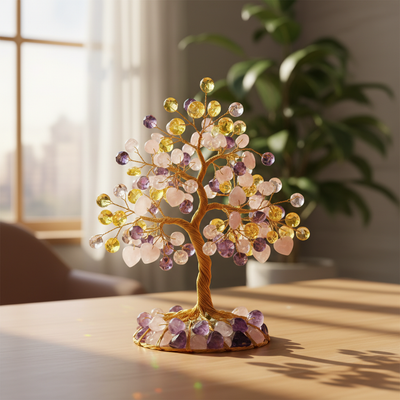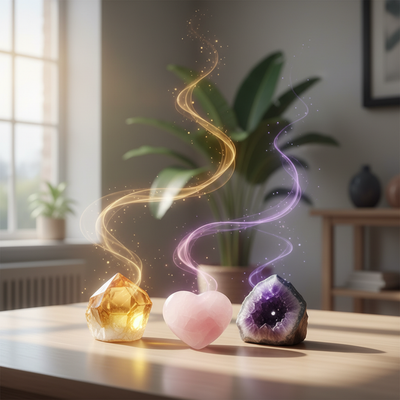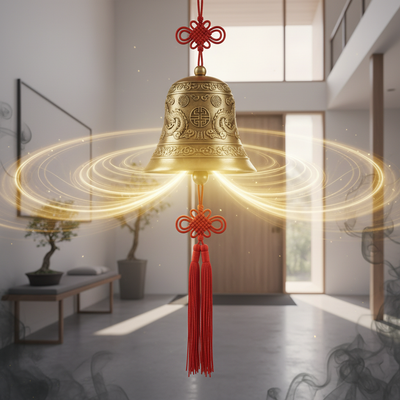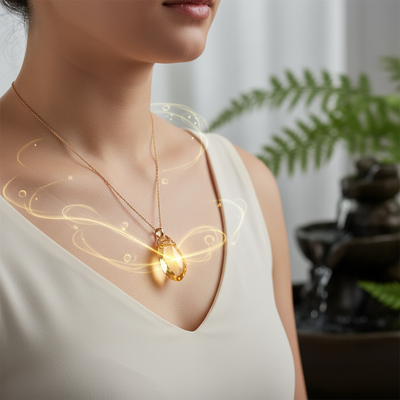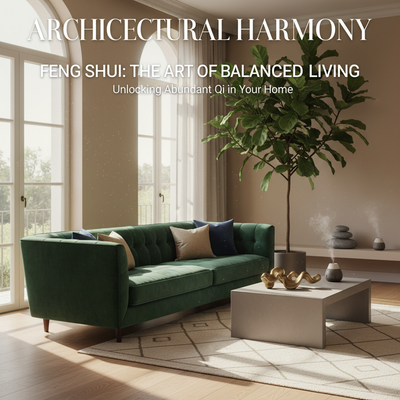Your master bedroom should be much more than a place to sleep. It's your personal safe space, a room meant for deep rest, renewal, and close connection with your partner. The colors you pick for this room aren't just for looks - they're a strong tool that can completely change how the room feels. The goal is to turn your bedroom into a peaceful place that helps your well-being in every way.
For those who want quick results, we've found that certain color groups always create a calm and balanced feeling. Feng Shui experts often suggest starting with these color choices:
- Earth and "Skin" Colors: From light beige and warm tan to rich brown.
- Calming Blues: Like light sky blue, soft aqua, or quiet teal.
- Gentle Pinks: Especially muted, dusty rose and soft blush colors.
- Relaxing Greens: Think calming sage, gentle mint, or muted olive green.
While these colors are great starting points for creating a space that helps rest, connection, and harmony, the real power of Feng Shui comes from making it personal. This guide will go beyond the basics, helping you understand the "why" behind these choices so you can pick the perfect colors for your unique energy and goals.
Understanding The "Why"

To really use the power of color, we must first understand the basic idea of Feng Shui: the Five Elements. These elements—Wood, Fire, Earth, Metal, and Water—are the building blocks of everything in the universe, including the energy in our homes. Each element connects to specific colors, qualities, and types of energy. Creating a balanced and helpful bedroom means understanding how these element colors work together to either feed or weaken the room's Qi, or life force energy.
The Five Elements and Colors
The elements exist in a continuous cycle of creation and support. For example, Water feeds Wood (water helps plants grow), Wood feeds Fire (wood feeds a fire), Fire creates Earth (ash returns to the earth), Earth makes Metal (metal is dug from the earth), and Metal holds Water (metal containers hold water). By understanding this helpful cycle, we can layer colors to create a harmonious and supportive space.
| Element | Related Colors | Energy & Qualities | Best Used For... |
|---|---|---|---|
| Wood | Green, Brown | Growth, Life, Healing, Flexibility | Creating a sense of renewal, health, and connection to nature. |
| Fire | Red, Bright Orange, Hot Pink, Purple | Passion, Energy, Growth, Romance | Bringing passion and warmth, but must be used carefully in a bedroom. |
| Earth | Beige, Sandy Colors, Terracotta, Pale Yellow | Stability, Grounding, Caring, Security | Creating a feeling of safety, security, and comfortable warmth. |
| Metal | White, Gray, Pastels, Metallics | Clarity, Precision, Order, Cleanliness | Helping mental clarity and structure, often used as a background. |
| Water | Blue, Black | Wisdom, Peace, Flow, Deep Thinking | Building a deep sense of calm, peace, and emotional depth. |
Top Feng Shui Color Combinations
Now that we understand the element energies, let's explore the most recommended color combinations for a master bedroom. Each family brings a specific quality to the space, letting you shape the room to your main goal, whether it's better sleep, stronger romance, or simply a greater sense of peace.
Earth and Skin Colors
This color group is the foundation of a caring Feng Shui bedroom. These colors, ranging from creamy off-white and soft beige to warm tan and rich brown, copy the variety of human skin colors. This unconscious connection creates a space that feels incredibly safe, warm, and comforting. They are the colors of the Earth element, which is all about stability and care.
- Colors to consider: Cream, beige, soft tan, sand, terracotta, muted peach, chocolate brown.
- Helps with: Stability, security, and deep caring. This color group is perfect for anyone who feels unsteady or worried. It creates a solid foundation for both rest and relationship connection.
Calming Blues
Blue is the color of the Water element, representing peace, wisdom, and a gentle flow of energy. In a bedroom, shades of blue can lower blood pressure and slow the heart rate, making them an excellent choice for helping deep, restoring sleep. It is the color of the sky and the sea, connecting us to a sense of peace and endless possibility.
- Colors to consider: Pale sky blue, soft aqua, powder blue, muted teal. A deep, muted navy can work beautifully as an accent wall behind the bed to create a cozy, den-like feel.
- Helps with: Calm, relaxation, and peaceful communication. This color group is excellent for reducing stress, quieting a busy mind, and encouraging open, gentle talk between partners.
Relaxing Greens
Connected to the Wood element, green is the color of life, health, and new beginnings. It represents the healing and balancing energy of nature. Bringing shades of green into the bedroom helps reduce stress and creates a feeling of renewal and restoration. It's like bringing the healing qualities of a forest or garden into your personal safe space.
- Colors to consider: Sage green, mint green, muted olive green, seafoam green, soft moss.
- Helps with: Healing, renewal, and balancing energy. Green is a wonderful choice for those focused on physical or emotional healing, as it supports growth and life while keeping a restful feeling.
Gentle Pinks and Reds
These colors tap into the Fire element, which controls passion, love, and romance. However, in a space designed for rest, the Fire element must be handled carefully. Bright, strong reds can be too stimulating and lead to restlessness or conflict. The key is to choose softer, gentler expressions of this energy.
- Colors to consider: Dusty rose, blush pink, soft coral, muted cranberry. These shades bring warmth and tenderness rather than intense passion.
- Helps with: Love, partnership, gentleness, and warmth. This color group is perfect for inviting a new partner into your life or rekindling the romantic connection in an existing relationship.
A Personal Approach
While the color groups above are universally helpful, the most powerful Feng Shui applications are tailored to you and your specific space. By taking a more personal approach, you can create a space that is not just generally calming, but one that actively supports your personal energy.
Step 1: Bedroom Bagua Area
In Feng Shui, we use an energy map called the Bagua to understand how different areas of a home connect to different areas of life. If you know which Bagua area your bedroom falls into, you can strengthen its energy with matching colors. For example, the Southwest area of the home is connected to Love and Marriage. If your master bedroom is located here, using colors of the Earth element (beige, tan) and the Fire element (pinks, soft reds) is especially good for your relationship. Don't worry if this seems complex; it's just one layer of personalization.
Step 2: Personal Feng Shui Element
A deeper level of customization comes from understanding your personal Feng Shui element, which is determined by your birth year and gender. This element reveals the type of energy that naturally supports you. The goal is to use colors that feed your personal element according to the helpful cycle we discussed earlier.
You can find your personal element, or Kua number, using many online calculators, but here is a simple guide based on the element connected with your birth year.
| Birth Year Ends In | Your Element | Supporting Element (and Colors) |
|---|---|---|
| 0 or 1 | Metal | Earth (Beige, Tan, Yellow) |
| 2 or 3 | Water | Metal (White, Gray, Metallics) |
| 4 or 5 | Wood | Water (Blue, Black) |
| 6 or 7 | Fire | Wood (Green, Brown) |
| 8 or 9 | Earth | Fire (Pink, Soft Red, Coral) |
For example, if you were born in 1985, your element is Wood. To support your Wood energy, you would want to introduce colors of the Water element (blue, black), because Water feeds Wood. A bedroom with a soft blue wall color and natural wood furniture would be incredibly supportive for you.
Creating Harmony for Couples

What happens when you and your partner have conflicting elements? This is a very common question. The solution is not to pick one over the other, but to create a harmonious blend. The best strategy is to use a neutral, supportive color for the main walls—Earth colors like beige or cream are almost always a perfect choice as they represent stability for everyone. Then, you can bring in each partner's supportive colors through accents. The Wood person can have a soft green throw blanket, and the Fire person can have art with touches of dusty rose. This way, the room supports both individuals.
From Theory to Reality
At THE QI FLOW, we've seen firsthand how these principles transform not just a room, but the lives of the people in it. A recent consultation provides a perfect example of color's deep impact.
The Challenge: A Disconnected Space
We were contacted by clients, "Mark and Lisa," who felt a growing sense of disconnection in their relationship. They were sleeping poorly and described their master bedroom as a source of stress rather than a retreat. When we arrived, we saw why. The room was painted a stark, cold light gray, a popular but challenging color from a Feng Shui perspective. The furniture was dark and heavy, and the overall feeling was one of isolation and coolness.
The QI FLOW Solution
During our consultation, we identified the main energy in the room as Metal, represented by the cold gray walls. While Metal energy can bring clarity, too much of it, especially when not balanced, can create a feeling of coldness and emotional distance. It was draining the warmth from the room and, by extension, their connection.
Our prescription was to shift the room's primary energy from Metal to Earth. We recommended repainting the walls in a warm, caring Earth color—a soft, sandy beige that immediately made the space feel more inviting and safe. To specifically support their relationship and re-introduce warmth, we layered in accents from the Fire element. We chose pillows in a sophisticated blush pink and a terracotta-colored throw blanket. These small touches were enough to gently reignite the room's romantic and passionate energy without being overwhelming.
The Result: Restored Connection
The shift was immediate. Mark and Lisa called us a week after making the changes, and their feedback was proof of the power of intentional color. "The change was incredible," Lisa told us. "The room feels like a hug now. We're sleeping more soundly, and it just feels like 'our' space again, a place we want to be together." This case perfectly shows that the right colors are far more than just decoration; they are a vital tool for shaping your environment and enhancing your well-being.
Beyond the Walls
Repainting an entire room isn't always possible, especially for renters or those on a budget. Fortunately, you don't need to paint all four walls to shift the energy. Feng Shui is about creating a balanced environment, and color can be layered in many effective ways.
- Bedding: Your bed is the most important piece of furniture in the room. A duvet cover, quilt, or sheet set in your chosen supportive color can have a huge impact on how you feel in the space.
- Accent Wall: If you're hesitant to commit to a full repaint, an accent wall behind the bed is a powerful alternative. It creates a strong focal point and anchors the room's energy.
- Rugs: An area rug is one of a designer's best tools. It can ground the room's energy, define the space, and introduce your desired color and texture in a significant way.
- Artwork: Choose art that not only features your supportive colors but also brings out the feeling you want to create. A peaceful landscape in blues and greens helps peace, while a beautiful abstract with soft pinks can suggest connection.
- Curtains and Textiles: Drapes, throw blankets, and decorative pillows are the easiest and most flexible ways to layer in color. You can change them with the seasons or as your needs change.
Colors to Use with Care
Just as some colors are naturally supportive for a bedroom, others can be disruptive if not used with intention. This isn't a list of "bad" colors, but rather a guide to using them in a balanced way to avoid unintended results.
Bright Red and Orange
These are high-energy Fire element colors. In large amounts, they are simply too active for a room dedicated to rest. Too much bright red can lead to overstimulation, restlessness, anxiety, and even arguments. It can make it very difficult to quiet your mind for sleep. The balanced approach is to use these colors as small, powerful accents—a single decorative object, a detail in a piece of art—to add a touch of passion without overwhelming the space.
Dark Blue and Black
These deep Water element colors can be wonderful for creating a sense of depth and deep thinking. However, if they dominate a bedroom, they can feel heavy and oppressive. Too much black or dark navy can contribute to feelings of sadness or depression, creating an energy that feels more like a cave than a sanctuary. The balanced approach is to use them as grounding accents, such as in a picture frame, the leg of a table, or a pattern within a rug, always balanced with lighter, warmer colors.
Stark White and Gray
An all-white or all-gray bedroom can look stylish in a magazine, but it can feel cold and lonely to live in. These are colors of the Metal element, and when used exclusively, they lack the warmth and caring energy essential for a restful space. It can feel clinical and unwelcoming. The balanced approach is to use crisp white or soft gray as a clean background, but be sure to layer in plenty of texture and warmth through wood furniture, beige or green textiles, and soft lighting.
Creating Your Sanctuary
Choosing the best colors for master bedroom feng shui is a journey of blending timeless principles with personal intuition. The most supportive colors are those that encourage rest, romance, and restoration.
The process is simple: start with proven calming color groups like Earth colors, soft blues, relaxing greens, or gentle pinks. Then, for a truly powerful effect, personalize your choice by considering your bedroom's Bagua area and your own personal element. Layer these colors through paint, textiles, and art to create a balanced and harmonious space.
Ultimately, your bedroom should be your ultimate sanctuary. Use these principles as your guide, but always trust your own feelings and intuition. The perfect color combination is the one that makes you breathe deeply and feel completely at home, creating a space that nourishes you completely, night after night.
